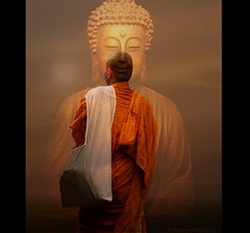Hīnayāna
Meaning ‘inferior vehicle,’ Hīnayāna is a derogatory term Mahāyāna Buddhists use for the pre-Mahāyāna schools of Buddhism. Although found in the earliest Mahāyāna sūtras (approximately 1st century BCE), the more common terms were arhatyāna, śravakayāna, i.e. ‘the disciples’ vehicle’ and hīnādhimukita, i.e. ‘freed by inferior means.’ Eventually Hīnayāna became the dominant term and it is still used today by Mahāyānists to describe Theravāda Buddhism.
The Mahāyāna claim that their ideal practitioner, the bodhisattva, strives to liberate all beings while the Hīnayāna ideal, the arahat, is intent on liberating himself or herself only. The Pāḷi Tipiṭaka contains no term, derogatory or otherwise, for Mahāyāna Buddhism simply because it predates the period when sects arose within Buddhism.
‘A Historical Study of the Terms Hinayana and Mahayana,’ R. Kimura, Journal of the Dept. of Letters, Calcutta University, Vol. XII, 1925.
